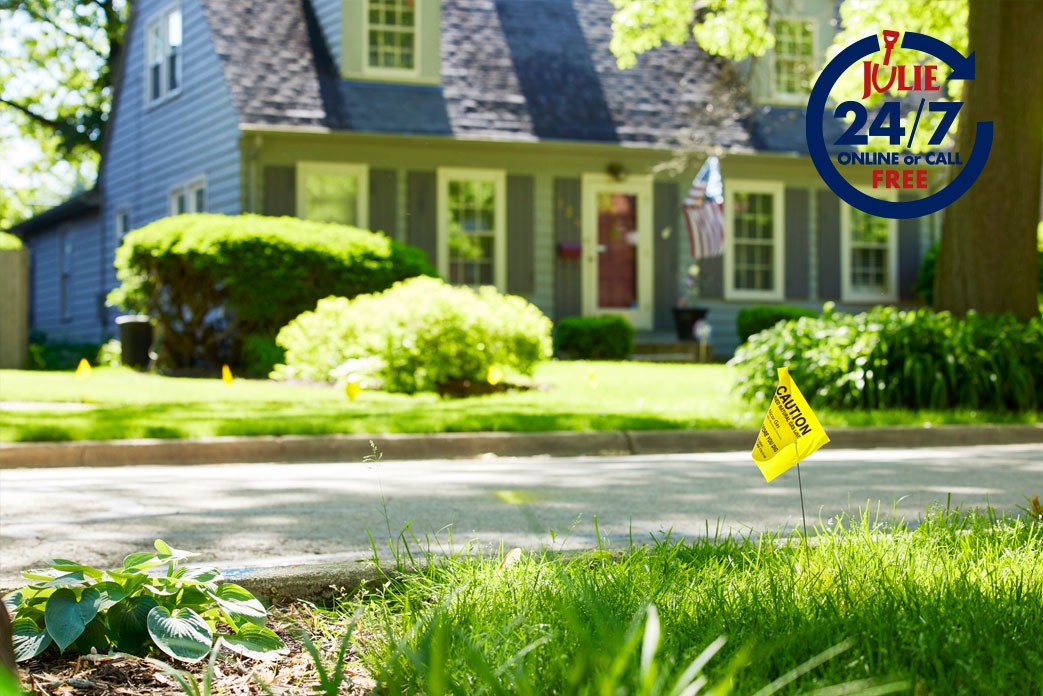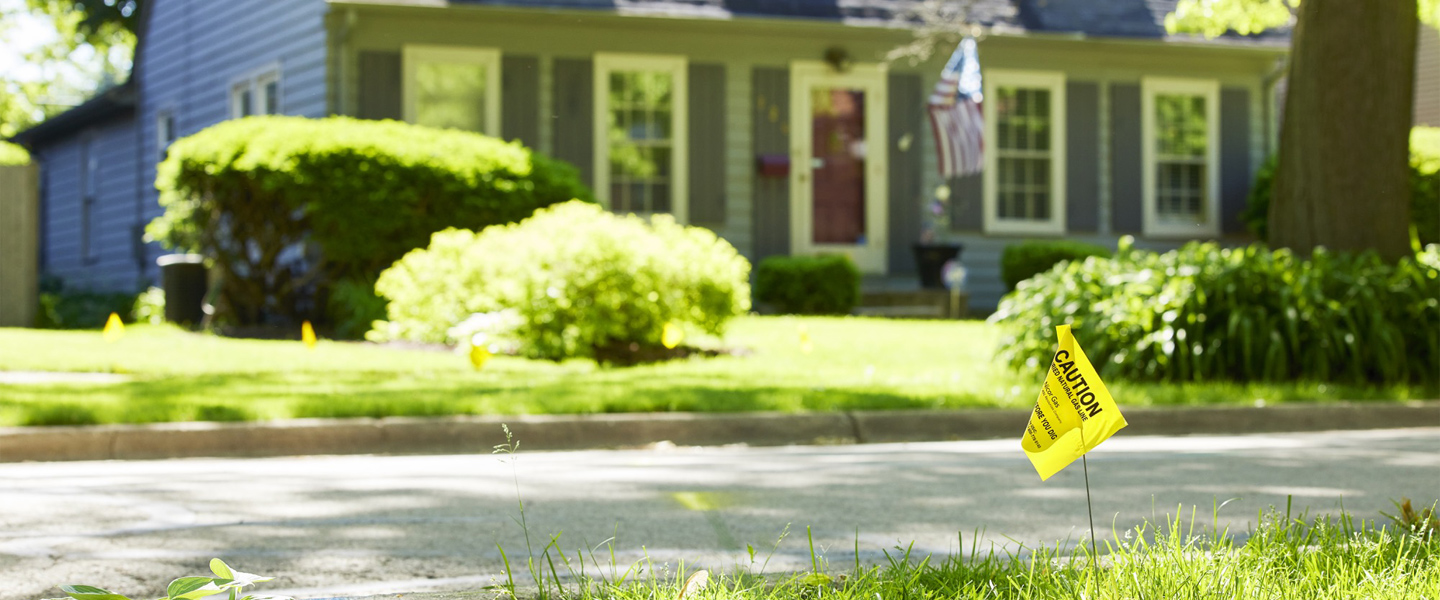Ways To Avoid Damage When Digging Around Utility Lines
When you go to dig a hole for a fence or mailbox post, plant a tree or flowers, or start construction on a deck…did you know that there could be more than just dirt in the ground? Utility lines may be buried just beneath the surface of your dig site and hitting one can disrupt critical services and even cause serious physical harm. The most important thing you can do to protect yourself when digging around utility lines is to contact JULIE before ever putting a shovel into the ground.

A buried utility line is damaged every few minutes across the United States. More than one-quarter of the time this is caused by the excavator failing to inform their local notification center. In Illinois, JULIE is the state’s FREE notification service to contact for safer digging underground. Simply submit an E-Request or call, and JULIE will alert its member utility companies to come mark their lines on your property. The service is available 24/7/365.
State law requires the person actually doing the digging underground contact JULIE—that’s you if you’re a DIYer or your contractor if you hire a professional—at least two business days before starting any excavation. Once you do so, you’ll receive a confirmation notice that includes a dig number. Next, professional locators from JULIE’s member utility companies will visit your property to mark the approximate location of their utility lines with paint and/or flags, or notify you that they have no buried lines in the area. JULIE personnel do not perform locating and marking services or visit dig sites.
Tip: If you want to start your project over the weekend, contact JULIE by Wednesday at 4 p.m.
NEVER start digging around utility lines until verifying that it is safe to do so! Double check that all member utility companies have marked the location of their underground lines by referencing your confirmation and dig number.
Call JULIE Before You Dig
Even the most basic projects—planting, building, adding, or fixing anything outdoors—require you contact JULIE before you dig, even if your project is in the same location as a previous one. It’s equally important that you pre-mark the location where you plan on digging underground with white paint and flags so locators understand the scope and scale of your job.
Tip: Check out some of the most common DIY projects that require you contact JULIE.
For Private Line Hire a Private Locator
Do you have a swimming pool, septic system, invisible pet fence, sprinkler system, or a gas line to a grill or buildings on your property? Then you may have private lines buried, as well. JULIE members are only required to mark the lines that they own, not privately installed or owned lines. Those must be located by hiring a private locator.
Once you know where all valuable utility lines are buried on your property you can start digging underground. You must begin your project within 14 calendar days from the time you receive your dig number. And if at any time you can no longer see flags or paint for any reason…weather, fading, construction activity, or vandalism…you can request that markings be refreshed online or over the phone.
Remember, locating an underground utility line is not an exact science and the colored flags and paint indicate the approximate location of a buried line. If possible, dig outside what’s called the tolerance zone, which is 18″ on either side of the line or pipe plus the diameter of the line or pipe itself as marked by the owner. If you must excavate within the tolerance zone, dig with extreme caution and only next to the marks, not on top of them.
Never make assumptions as to where your utility lines might be located. Having your lines located and marked is easy, free and a critical step in beginning any digging project.

Safe Digging Tip: Always contact JULIE before you dig to have utility lines on your property located for free by our members. Valuable utility lines may be buried just beneath the surface and hitting one could disrupt critical services, cause serious harm to you or your family, or even result in costly repairs and fines.




 CONTACT US
CONTACT US